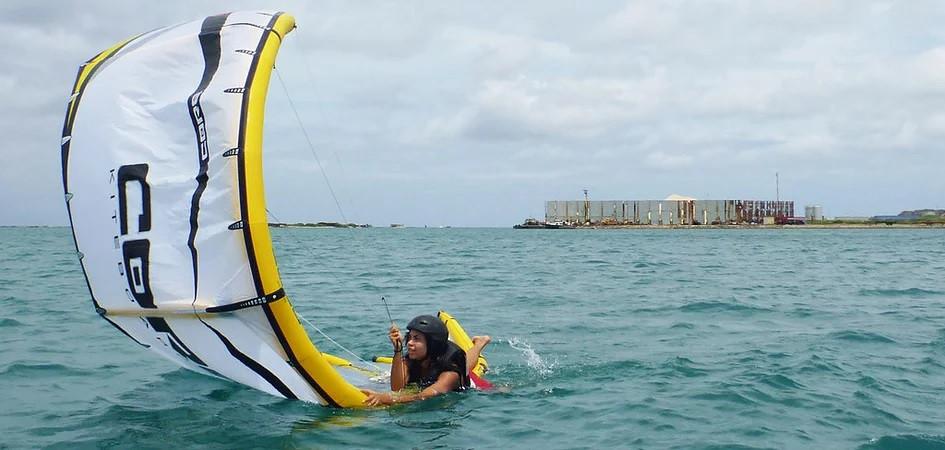
The Self-Rescue
Share
It is imperative that you know how to get back to the beach and how to pack down your kite, both in shallow and deep water. There is also more than one way to self rescue depending on the situation that you are in so understanding each method and when to use them is crucial to getting back to the beach safely.

These self rescue instructions will let you get back to the shore using your kite and the available wind. This method is best in light to moderate wind. Let’s go over how to perform the kiteboarding self rescue:
1. Release the bar and the chicken loop.
2. Retrieve the bar hand over hand along the safety line.
3. Secure the flagging line (leash line) onto the bar completely before winding in the rest of the lines. It is important that this line remains tight so that the kite stays flagged.
4. Wrap all the lines onto the bar; secure the depower lines first before the main flying lines.
5. Pull the bar back, like you would a fishing rod, to make wrapping the line easier as you approach the kite.
6. Once at the kite, hold onto the leading edge as you secure the lines using the bar bungees.
7. Make your way to the wingtip
8. Flip the kite over by using your shoulder nearest the center of the kite, while sinking the wingtip with the other hand.
9. Grab the top front line and work your way up to the bridle as you lay onto the leading edge.
10. Relax and make yourself comfortable as you sail across the wind towards shore.
If you are in high wind and are concerned that the kite may take flight while performing the self rescue then this method will get you to your kite quicker but it does present a higher risk of becoming tangled in the lines. As always use your best judgment and stay calm in any emergency situation. Here is how you could perform a self rescue in high winds.
1. Release the bar and the chicken loop
2. Retrieve the bar hand over hand along the safety line
3. Secure the flagging line (leash line) onto the bar completely before winding in the rest of the lines. It is important that this line remains tight so that the kite stays flagged.
4. Swim at a 45 degree angle between your kite and the shore line as you continue hand over hand to one center line. The goal is to keep your lines flowing downwind as you swim towards the land, ensuring that you do not get tangled in the lines as you make your way to the kite.
5. Continue moving at this angle up the center line until you reach the leading edge of the kite.
6. Once at the kite, make your way to the wingtip.
7. Flip the kite over by using your shoulder nearest the center of the kite, while sinking the wingtip with the other hand.
8. Grab the top front line and work your way up to the bridle as you lay onto the leading edge.
10. Relax and make yourself comfortable as you sail across the wind towards shore.
If the wind dies or a watercraft is coming to your rescue, you can pack down you kiteboarding gear, while in the water. Here's how to do it:
1. Deflate the leading edge
2. Make your way to the opposing wingtip.
3. Begin rolling up the kite towards the dump valve.
4. Make sure all the lines are wrapped up inside the canopy.
5. Plug in the dump valve, as soon as you reach it to stop water getting in.
6. Secure the kite with your harness or leash to stop it from unrolling.
7. Pass the kite leading edge first to your helper to allow the water to drain out.
Below is a great video showing how to perform one of the self rescues mentioned above.
Next Steps:
Now that you have went throught our First Session Series, its time for your Second Session!
